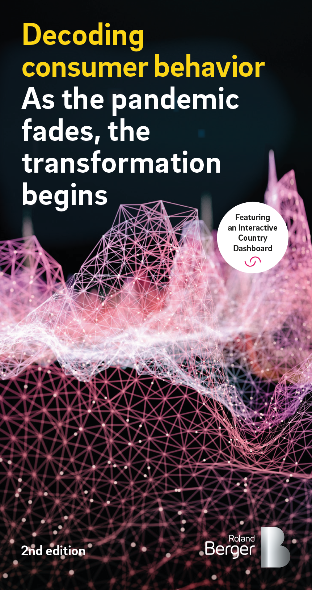Stores, reinvented
Physical retail has been massively disrupted by Covid-19. Read now, how the convenience-experience spectrum helps retailers to transform their role accordingly.


With the pandemic fading into the background, and as economies ramp up and social life reopens, the world is slowly beginning to readjust to a new normal. The one area where Covid-19 may have left an irreversible impact though is on consumer behavior . In 2020, as the pandemic raged on, consumers were forced to redefine how they work, interact and shop. Consumer behavioral patterns witnessed a dramatic change – e-commerce sales rose swiftly, sustainability became a bigger concern and digital communication took over everything. Now, in a survey conducted by Roland Berger, in collaboration with the research company Potloc, it has become clear that many of these patterns are here to stay. This will have important implications for businesses.
-(1)_video_none.jpg?v=712874)
"The world will never be the same again as it was before Covid-19, so businesses must be ready to change and adapt to the new normal taking shape around them."
In July 2021, 2100 people across genders, age groups and income levels were surveyed in 21 cities across the world. 43% of the respondents expressed optimism about their personal life outlook, even as consumers in Europe raised concerns. More critically, one-third of those surveyed assume that life will not be returning to normal.
Covid-19 forced consumers to move a large part of their lives online – and that looks unlikely to change. The increased use of social media (56%), online streaming services (40%) and apps (33%) that took hold at the height of the pandemic are here to stay. Newspapers and printed magazines, meanwhile, took a hard hit.
"Sustainability now has become a veritable purchasing criteria for consumers."
Expenditure and consumption, which reduced considerably in 2020, are now showing signs of recovery – only 14% of those surveyed were planning to reduce consumption in 2022. Resilient businesses that can adapt quickly to changing circumstances stand to gain the most from this rebound.
The survey led to six key insights:
The pandemic has had a lasting impact on every sphere of our daily lives. In order for businesses to thrive in a post-pandemic world, they need to be ready to adapt quickly. Roland Berger’s TRANSCOV methodology – which tackles everything from reviewing sustainability to adjusting brand stories - helps businesses assess if they are equipped to succeed in this “new normal”.
We are delighted to call the market research company Potloc our cooperation partner in this project. For more valuable insights into our conducted global consumer behavior survey, please download our study now and get in contact with our experts.
Register now to receive the study on how shopping habits shift in times of corona globally and what these changes mean for the consumer goods sector.